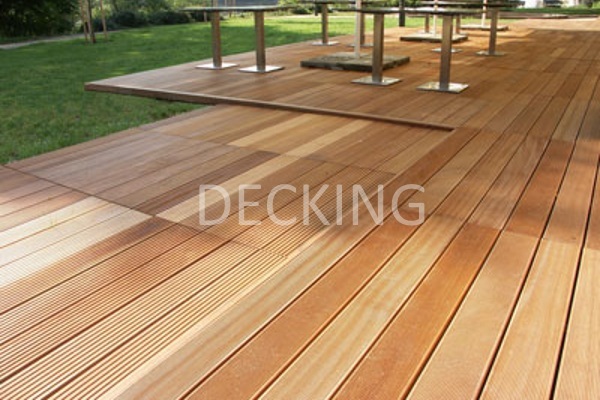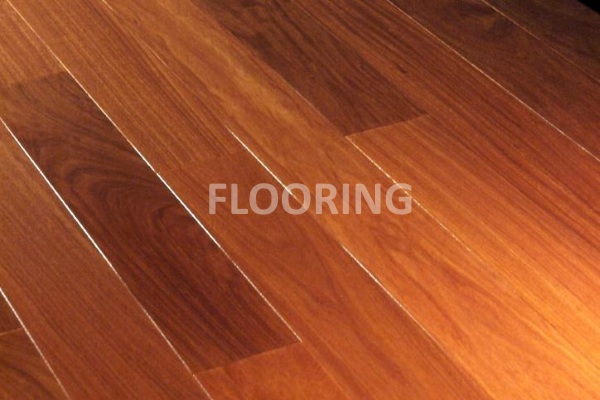| Botanical name: | Mora excelsa |
| Family: | Caesalpiniaceae |
| Vernacular name (Guyana): | Mora |
| International trade name: | Mora |
| Wood Appearance |
|
Mora (and Morabukea which is similar in structure) heartwood varies from chocolate-brown to reddish-brown. Sapwood is wide with yellowish to pale brown colour. The grain is straight and often interlocked and somewhat wavy or irregular. The texture is coarse and bole 15-24m in length, rounded or flattened. The diameter is 60-90 (-120) cm. |
| Physical and Mechanical Properties |
| A very heavy, hard wood. Outstanding strength properties: |
| Air dried density (12%) - 990kg/m3 |
| Bending strength (at 12%) - 149 N/mm2 |
| Modulus of elasticity (at 12%) - 21020 N/mm2 |
| Crushing strength (at 12%) - 81 N/mm2 |
| Natural Durability |
| The heartwood is durable and extremely resistant to preservatives. Mora is markedly fire resistant. |
| Treatability : Poor |
| Timber Processing |
| Drying - Difficult i.e. it must be carried out carefully because of processing risk of distortion and checking. Kiln Schedule B. |
| Working - Difficult to saw, because of its density and interlocked grain. Blunting effect is moderate to high. With the same qualification, it can be planed, finishes smoothly, turns easily, splits with great difficulty. |
| Assembly - Difficult to nail but holds nails and rail spikes well. Pre-boring is necessary. |
| Finishing - Stains and polishes satisfactorily. |
| Uses |
| Best suited for heavy construction work, jetties and foreshore work. Particularly suitable forsleepers, wagon bottoms, and for both traditional and mosaic flooring and ship-building. |
| Availability and Location |
| Very common in Guyana. Abundant and regular supplies assured. Most abundant in North West District, Cuyuni-Supenaam, Cuyuni-Mazaruni, and Berbice Corentyne areas. |






